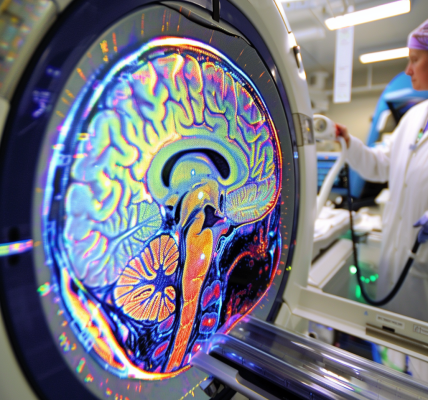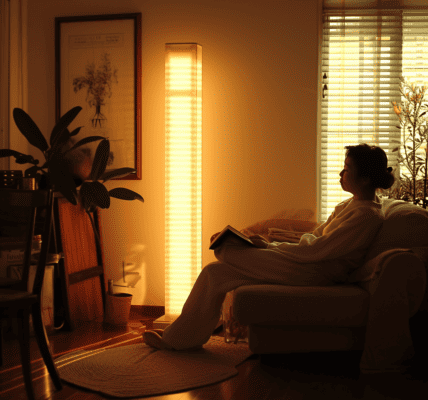In today’s fast-paced work environment, maintaining a healthy lifestyle can be a challenge, particularly for those who spend the majority of their day seated at a desk. Research indicates that prolonged sitting is linked to various health risks, including Type 2 diabetes, certain cancers, and even premature death. Furthermore, a recent study highlights the negative impact of sedentary behavior on mental health, revealing that mood can significantly decline after just two hours of desk work.
According to a survey by sportswear brand Asics, which involved over 7,000 desk workers, stress levels begin to escalate after four hours of continuous sitting. However, the good news is that taking short breaks for physical activity can effectively counteract these adverse effects. Professor Brendon Stubbs, a prominent researcher in movement and mental well-being at King’s College London, emphasizes the importance of integrating movement and other healthy habits into the workday.
“Each habit can contribute to positive mental health, and the more people engage in these habits over time, the greater the physical and mental health benefits,” Professor Stubbs explains. To help individuals enhance their well-being during work hours, he has outlined several practical tips.
8 AM: Engage Your Mind During Your Commute
Instead of scrolling through social media during your commute, consider reading a book or engaging in other intellectually stimulating activities. Professor Stubbs points out that passive sedentary behavior, such as mindlessly watching TV or endlessly scrolling through social media feeds, can be particularly harmful to mental health. In contrast, active sedentary behavior—like reading or playing a game—can be more beneficial.
A study conducted by Professor Stubbs and his colleagues, which analyzed the health habits of approximately 40,000 individuals, found that those who engaged in more than three hours of active sedentary behavior daily had a 26% lower risk of experiencing depression compared to those who did less. Additionally, excessive use of social media has been shown to alter brain function and diminish motivation for daily tasks.
11 AM: Practice Breathing Exercises to Alleviate Stress
As the workday progresses, stress levels can begin to rise, particularly around 11 AM if your workday starts at 9 AM. To combat this, Professor Stubbs recommends taking a moment for deep nasal breathing exercises. Research from Stanford University has demonstrated that just five minutes of focused breathing can significantly reduce anxiety, enhance mood, and promote a calmer state by slowing down the body’s breathing rate.
Incorporating these small yet effective practices into your daily routine can foster a healthier work environment and improve both mental and physical well-being. By making conscious choices throughout the day, individuals can mitigate the negative effects of prolonged sitting and enhance their overall quality of life.
1 PM: Opt for a Healthy Lunch
When lunchtime rolls around, it’s essential to make mindful food choices that will sustain your energy levels and keep your mind sharp for the remainder of the day. Instead of reaching for processed snacks or sugary treats, consider packing a nutritious lunch filled with whole foods, including fruits, vegetables, lean proteins, and whole grains.
Professor Stubbs suggests that a balanced meal can improve cognitive function and mood, allowing for better focus and productivity in the afternoon. Additionally, staying hydrated is crucial for maintaining energy levels, so be sure to drink plenty of water throughout the day.
3 PM: Take a Short Walk
As the afternoon slump sets in, taking a brief walk can do wonders for your mental clarity and energy. Whether it’s a quick stroll around the office or a lap outside, moving your body can help reset your mind and combat feelings of fatigue. Professor Stubbs emphasizes that even a 15-minute walk can significantly enhance mood and reduce stress.
Notably, engaging in physical activity during the workday has been linked to increased productivity and creativity. By stepping away from your desk and getting some fresh air, you can return to your tasks feeling rejuvenated and ready to tackle the rest of your day.
5 PM: Wind Down with Mindfulness
As the workday comes to a close, it’s important to transition from work mode to personal time. Engaging in mindfulness practices, such as meditation or gentle stretching, can help ease the stress accumulated throughout the day. Professor Stubbs recommends dedicating a few minutes to mindfulness exercises to promote relaxation and mental clarity.
Mindfulness has been shown to improve emotional regulation and increase overall well-being. By incorporating these practices into your evening routine, you can create a sense of balance and prepare yourself for a restful night.
Throughout the Day: Stay Active
In addition to these specific practices, it’s crucial to integrate movement throughout your entire workday. Simple actions like standing up while on phone calls, using a standing desk, or even doing light stretches can contribute to better physical health and mental well-being. Professor Stubbs encourages individuals to find creative ways to incorporate movement into their daily routines.
Ultimately, the key to a healthier workday lies in making small, intentional choices that prioritize both physical activity and mental health. By adopting these habits, individuals can create a more balanced lifestyle, even within the constraints of a desk-based job.





